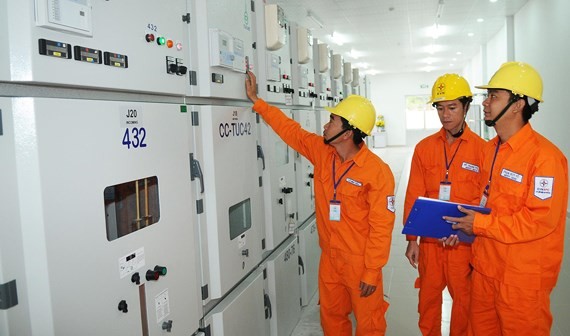
A solar power plant project usually takes around six months to complete whereas a 220kV or 500kV overhead power line project takes up to three to five years.
Mr. To Van Dan, head of the Investment Management Board of the EVN National Power Transmission Corporation, said that in order to release the capacity of renewable energy sources in Ninh Thuan and Binh Thuan provinces in the period from 2020 to 2021, the company has planned to build 12 overhead power grids and electrical substations. Of which, six projects have been in planning whereas the remaining six ones have not in planning yet.
Among six under-construction projects, two projects are encountering difficulties in site clearance. Particularly, although the 220kV Phan Ri substation project already had contractor since December 2018, until now, construction is still unable to start as only 11 percent of total area of construction site was cleared and handed over to contractor by June 20. As for the 220kV Nha Trang – Thap Cham power line project, the project was planned to go online in December this year. However, it is current stuck at 55 foundations for the power line to pass natural forest which needs to be reported to the Prime Minister so as to change use purpose of the forest land.
Similarly, the EVN Southern Power Corporation (EVNSPC) also had to cope with problems in site clearance when carrying out projects to release capacity of renewable energy. Besides, according to Mr. Lam Xuan Tuan, deputy CEO of EVNSPC, selecting contractor during period is also a challenge as several ongoing renewable energy projects have attracted almost all human resources of construction contractors. In addition, EVNSPC has not been able to have agreements to disconnect power during the day as for operating power plants so construction can only be carried out at night, from 4 p.m. to 6 a.m. Nighttime construction is neither safe nor effective as expected. Although the company asked construction contractors to use the maximum number of their workers, they were able to finish around 2 kilometers of power line each night.
By the end of June this year, total capacity of wind and solar power in Ninh Thuan Province has climbed to 2,027 megawatts, accounting for nearly 50 percent of total renewable energy capacity of the whole country. It is expected that the figure will rise to 4,240 megawatts by December this year. While local capacity is extremely high, load demand of Binh Thuan and Ninh Thuan provinces is relatively low. Of which, load of Ninh Thuan Province is from 100-115 megawatts and that of Binh Thuan Province is 250-280 megawatts. Therefore, it is urgent to speed up the progress of power line projects to release renewable energy capacity.
Representatives of EVNNPT and EVNSPC both affirmed that during the implementation process of renewable energy releasing projects, their companies have closely cooperated with ministries, departments and local authorities, gathered human resource and closely supervised contractors. However, in order to accelerate the progress of projects and ensure the interests of investors as well as power industry, it is essential to have synchronous and drastic participation of authorities in examination and assessment of projects, agreements on line directions and substation locations. Especially, local authorities should consider and instruct relevant department to be more drastic in compensation and site clearance. Provinces also need to be flexible in supporting affected households for them to hand over the land for contractors to start construction then at the same time carry out compensation procedures and site clearance as prescribed.
The 110kV Thap Cham – Hau Sanh – Tuy Phong – Phan Ri power line has load-carrying level up to 260-360 percent. The 110kV Phan Ri - Song Binh - Dai Ninh power line carries load of 140 percent. The 110kV Da Nhim - Don Duong power line has load-carrying level of 123 percent. The 550kV Di Linh substation carries load of 140 percent and the 220kV Duc Trong - Di Linh substation carries load of 110 percent. It is forecasted that the load-carrying level will continue to climb in the near future.
























